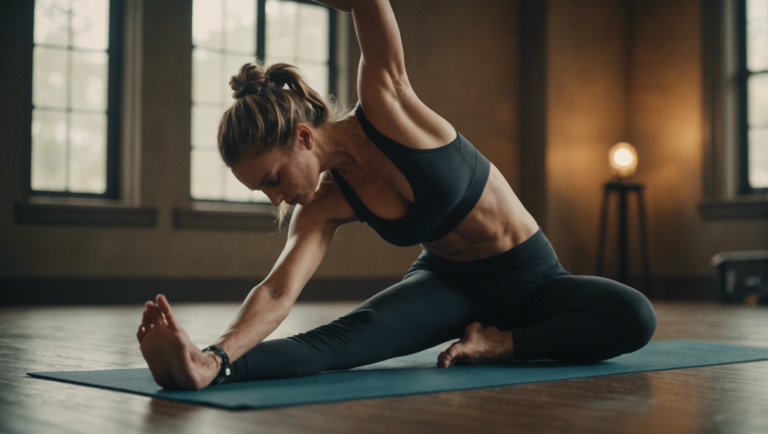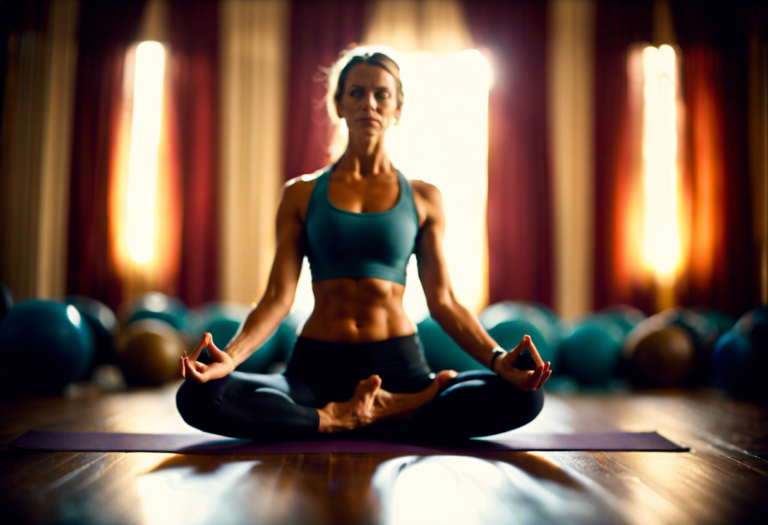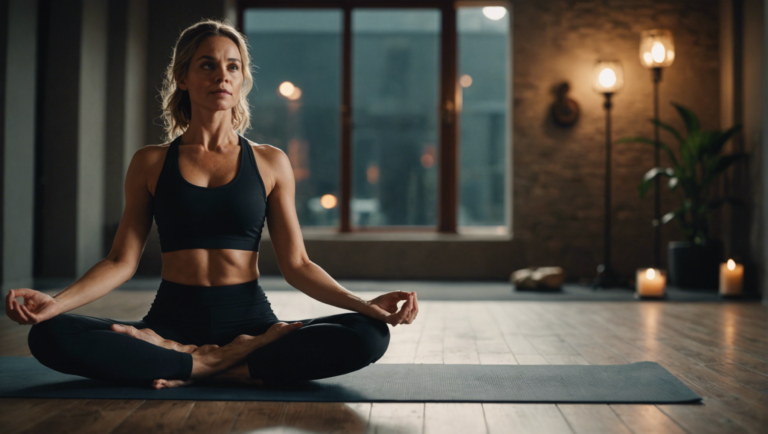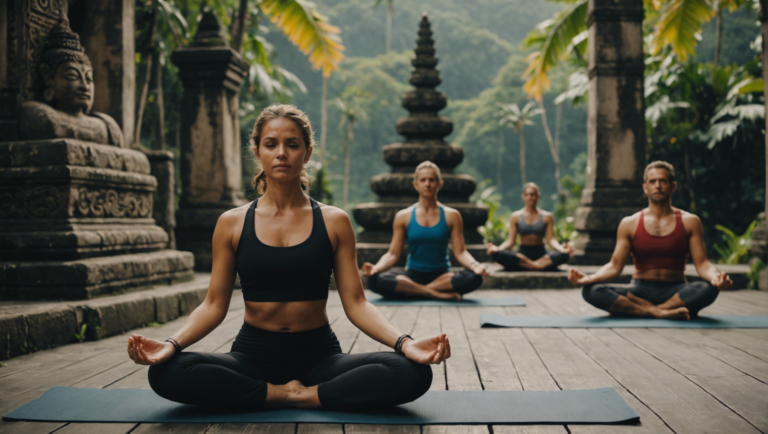Mastering The Art: An Ultimate Guide To Yoga
Benefits of Yoga for Mind, Body, and Soul
Yoga is an ancient practice that has gained immense popularity in recent years due to its numerous benefits for the mind, body, and soul. yoga into your daily routine can have a profound impact on your overall well-being. From increased flexibility and strength to stress reduction and mental clarity, the benefits of yoga are truly transformative.
Physical Benefits
Practicing yoga regularly can lead to a wide range of physical benefits. One of the most well-known advantages of yoga is improved flexibility. Through a series of poses and stretches, yoga helps to lengthen and stretch muscles, ultimately leading to increased flexibility over time. Additionally, yoga is excellent for building strength, particularly in the core, arms, and legs. Many yoga poses require you to support your body weight, which can help tone and strengthen muscles.
Mental Benefits
In addition to the physical benefits, yoga is also incredibly beneficial for mental health. Yoga emphasizes mindfulness and focusing on the present moment, which can help reduce stress and anxiety. The deep breathing techniques used in yoga can help calm the mind and promote relaxation. Regular yoga practice has been linked to improved sleep, increased concentration, and a greater sense of overall well-being.
Emotional Benefits
Yoga is not only about physical postures; it also involves breathing exercises, meditation, and self-reflection. These practices can have a significant impact on your emotional well-being. Yoga cultivates a sense of inner peace and promotes self-acceptance and self-love. By connecting the mind, body, and soul, yoga can help you gain better control over your emotions and develop a more positive outlook on life.
Spiritual Benefits
For many practitioners, yoga is a deeply spiritual practice that connects them to something greater than themselves. While yoga is not a religion, it can be a spiritual journey for those who seek a deeper connection to the universe or a higher power. Through meditation and introspection, yoga can help you tap into your spiritual side and foster a sense of interconnectedness with all living beings.
Holistic Well-Being
Ultimately, the benefits of yoga extend far beyond the physical body. Yoga is a holistic practice that addresses the individual as a whole—mind, body, and soul. By incorporating yoga into your daily routine, you can experience a profound transformation that goes beyond the physical postures and reaches deep into the essence of who you are.
The practice of yoga offers a wealth of benefits for overall well-being. Whether you are looking to improve your physical fitness, reduce stress, cultivate inner peace, or deepen your spiritual connection, yoga has something to offer everyone. By mastering the art of yoga, you can embark on a journey of self-discovery and transformation that will enrich every aspect of your life.
Different Styles of Yoga and Their Benefits
Yoga is a holistic practice that combines physical postures, breathing techniques, and meditation to promote overall well-being and improve health. There are various styles of yoga, each with its unique focus and benefits. Understanding the different styles can help you choose the practice that best aligns with your goals and preferences.
Exploring Hatha Yoga
Hatha yoga is one of the most popular styles that emphasizes the physical postures or asanas. It is a gentle form of yoga suitable for beginners and focuses on aligning the body, mind, and breath. Practicing Hatha yoga helps improve flexibility, strength, and balance while promoting relaxation and stress relief.
Embracing Vinyasa Yoga
Vinyasa yoga is a dynamic and flowing style that synchronizes movement with breath. It involves a series of poses that seamlessly transition from one to another, creating a dance-like sequence. Vinyasa yoga is excellent for building heat in the body, improving cardiovascular health, and enhancing overall body awareness.
Diving into Ashtanga Yoga
Ashtanga yoga is a vigorous and physically demanding practice that follows a specific sequence of poses. It focuses on breath control, internal energy locks, and gazing points to create a meditative state during practice. Ashtanga yoga builds strength, endurance, and mental focus while detoxifying the body through sweat.
Discovering Iyengar Yoga
Iyengar yoga is a precise and alignment-based practice that uses props like blocks, straps, and blankets to assist in performing asanas correctly. This style pays particular attention to detail and emphasizes holding poses for extended periods to improve strength and flexibility. Iyengar yoga is beneficial for those recovering from injuries or with physical limitations.
Experiencing Bikram Yoga
Bikram yoga, also known as hot yoga, consists of a series of 26 poses practiced in a room heated to a high temperature. The heat helps increase flexibility, prevent injuries, and flush toxins from the body through sweat. Bikram yoga is designed to work every part of the body, including muscles, joints, and organs.
Nurturing Yin Yoga
Yin yoga is a gentle and slow-paced practice that targets the connective tissues, such as ligaments and fascia, through passive stretching. Poses are held for an extended period, allowing practitioners to relax and release tension in the body. Yin yoga is a meditative practice that helps improve flexibility, joint health, and emotional well-being.
Each style of yoga offers a unique approach to physical and mental wellness, catering to different needs and preferences. Whether you are looking to build strength, increase flexibility, reduce stress, or cultivate mindfulness, there is a style of yoga that can support your journey towards holistic well-being. Experimenting with various styles can help you discover the practice that resonates most with you and enhances your overall quality of life.
The Importance of Breathing Techniques in Yoga Practice
Mastering the art of yoga goes beyond performing intricate poses and mastering sequences. One of the fundamental aspects that underpin a successful yoga practice is the incorporation of proper breathing techniques. The practice of controlled and mindful breathing, also known as pranayama, plays a crucial role in enhancing the mind-body connection and overall experience during yoga sessions.
The Power of Breath in Yoga Practice
In yoga philosophy, breath is considered the bridge between the body and the mind. By focusing on the breath, practitioners can cultivate a deeper sense of awareness and mindfulness throughout their practice. Conscious breathing not only oxygenates the body but also calms the mind, reduces stress, and improves overall well-being. Different breathing techniques in yoga serve distinct purposes, whether it’s to energize the body, calm the nervous system, or enhance mental clarity.
Benefits of Breathing Techniques
Proper breathing techniques form the cornerstone of a holistic yoga practice. Deep breathing techniques, such as diaphragmatic breathing or belly breathing, help to increase lung capacity, improve respiratory function, and enhance circulation. By consciously engaging with the breath, practitioners can release tension, increase relaxation, and enter a meditative state more easily.
Understanding the Role of Pranayama
Pranayama, the formal practice of controlling the breath, focuses on the regulation of inhalation, retention, and exhalation. This ancient yogic practice encompasses various breathing techniques, each serving a unique purpose. From the energizing breath of Kapalabhati to the calming breath of Nadi Shodhana, pranayama offers a diverse range of tools to support physical, mental, and emotional well-being.
Cultivating Mindfulness Through Breath Awareness
Breath awareness lies at the heart of yoga practice, serving as a constant anchor amidst the ebb and flow of poses and sequences. By staying present with each inhale and exhale, practitioners can deepen their connection to the present moment, quiet the fluctuations of the mind, and foster a sense of inner peace. Mindful breathing not only enhances the benefits of yoga postures but also extends into daily life, promoting a sense of calm and clarity.
Integrating Breathwork into Your Yoga Practice
To fully experience the transformative power of breath in yoga, it is essential to integrate conscious breathing into your daily practice. Begin each session with a few minutes of deep breathing to center yourself and establish a focused mindset. Throughout the practice, maintain a steady awareness of your breath, syncing its rhythm with movement to create a seamless flow of energy. By paying attention to the quality of your breath, you can refine your practice, deepen your concentration, and unlock new dimensions of physical and mental well-being.
Mastering the art of yoga involves cultivating a harmonious relationship between body, mind, and breath. By embracing the profound impact of breathing techniques, practitioners can elevate their practice to new heights, fostering a deeper union of self-awareness, tranquility, and vitality. Through the intentional practice of pranayama and breath awareness, individuals can embark on a transformative journey of self-discovery and holistic well-being within the enriching realm of yoga.
How Yoga Can Improve Flexibility and Strength
Yoga has long been celebrated for its ability to improve flexibility and strength in individuals of all ages and fitness levels. This ancient practice combines physical postures, breathing techniques, and meditation to promote overall well-being. In this article, we will explore how incorporating yoga into your routine can lead to significant enhancements in both flexibility and strength.
The Relationship Between Yoga and Flexibility
Flexibility is the capacity of your muscles and joints to move through a full range of motion. Practicing yoga regularly can help increase flexibility by stretching and elongating muscles, tendons, and ligaments. As you move through various yoga poses, you gently stretch and strengthen different muscle groups, promoting greater overall flexibility.
Key Yoga Poses for Flexibility
Certain yoga poses are particularly effective in improving flexibility. Poses such as Downward-Facing Dog, Forward Fold, and Pigeon Pose target different areas of the body, including the hamstrings, hips, and spine. Holding these poses for a sustained period of time can help release tension in tight muscles and improve overall flexibility.
Enhancing Strength Through Yoga
While yoga is often associated with flexibility, it is also a powerful tool for building strength. Many yoga poses require engaging multiple muscle groups simultaneously, leading to increased muscle tone and strength. For example, poses like Plank, Warrior II, and Chair Pose help develop core strength, arm muscles, and leg muscles, respectively.
Combining Flexibility and Strength
One of the unique aspects of yoga is its ability to simultaneously enhance flexibility and strength. Poses such as Wheel Pose, Tree Pose, and Boat Pose require a combination of strength and flexibility to execute correctly. By practicing these poses regularly, you can achieve a balance between flexibility and strength in your body.
The Mind-Body Connection
In addition to physical benefits, yoga also emphasizes the importance of the mind-body connection. As you move through yoga poses, you are encouraged to focus on your breath and be present in the moment. This mindfulness can help reduce stress, improve mental clarity, and enhance overall well-being.
Yoga offers a holistic approach to improving flexibility and strength. By incorporating yoga into your fitness routine, you can experience significant benefits in both physical and mental health. Whether you are a beginner or an experienced yogi, the practice of yoga can help you achieve a greater sense of balance, flexibility, and strength in your body and mind.
Tips for Beginners to Start and Sustain a Yoga Practice
Mastering the Art: A Comprehensive Guide to Yoga Practice
Embarking on a yoga journey as a beginner can be both exciting and daunting. With the right tips and guidance, starting and sustaining a yoga practice can become a rewarding experience that nurtures your mind, body, and spirit. Here are some valuable insights to help beginners kickstart their yoga journey and maintain a consistent practice over time.
Setting Intentions and Goals
Before diving into your yoga practice, take a moment to reflect on your intentions and goals. Ask yourself why you are drawn to yoga and what you hope to achieve through your practice. Setting clear intentions will not only help you stay motivated but also provide a sense of purpose and direction on your yoga journey.
Finding the Right Style and Teacher
Yoga offers a wide range of styles, from gentle Hatha and restorative yoga to dynamic Vinyasa and challenging Ashtanga. Explore different styles to find one that resonates with your preferences and goals. Additionally, finding a knowledgeable and supportive yoga teacher can make a significant difference in your practice. Look for instructors who prioritize alignment, safety, and mindfulness in their classes.
Cultivating Consistency
Consistency is key when it comes to establishing a sustainable yoga practice. Start by setting aside dedicated time for yoga in your daily or weekly schedule. Whether it’s a 10-minute morning flow or a longer session on weekends, commit to making yoga a regular part of your routine. Consistent practice not only enhances your physical abilities but also cultivates mental clarity and emotional well-being.
Honoring Your Body and Progress
Yoga is a personal journey of self-discovery and self-care. Listen to your body’s needs and honor its limits during each practice. Avoid pushing yourself too hard or comparing your progress to others. Celebrate the small victories, whether it’s holding a challenging pose for an extra breath or finding peace in a moment of stillness. Progress in yoga is measured not just by physical milestones but also by inner growth and self-awareness.
Creating a Sacred Space
To deepen your yoga practice, consider creating a dedicated space in your home where you can practice with focus and intention. This space can be as simple as a corner with a yoga mat, a few props, and inspiring decorations. By establishing a sacred space for your practice, you signal to your mind and body that it’s time to unwind, connect, and nourish yourself through yoga.
Embracing Mindfulness and Breath
Yoga is not just about physical postures; it also encompasses mindfulness and breath awareness. Stay present during your practice by focusing on your breath, sensations, and thoughts. Cultivate mindfulness both on and off the mat by bringing awareness to your daily activities and interactions. The breath is your anchor in yoga, guiding you through movement and stillness with grace and awareness.
Seeking Community and Support
Remember that you are not alone on your yoga journey. Seek out community classes, workshops, or online forums where you can connect with like-minded individuals and share your experiences. Surround yourself with a supportive network of friends, family, or fellow yogis who can encourage and uplift you on your path. Building a community of support can nourish your practice and inspire you to continue growing and evolving as a yogi.
Starting and sustaining a yoga practice as a beginner requires patience, dedication, and an open heart. By setting intentions, exploring different styles, cultivating consistency, honoring your body, creating a sacred space, embracing mindfulness, and seeking community support, you can lay a strong foundation for a fulfilling and transformative yoga journey. Remember that yoga is a practice of self-discovery and self-care, and each step you take on the mat brings you closer to a deeper connection with yourself and the world around you. Namaste.
Conclusion
Yoga into your daily routine can bring about a multitude of benefits for your overall well-being. From enhancing your mental clarity to fostering physical strength and flexibility, the practice of yoga holds the potential to transform your mind, body, and soul.
Exploring the vast array of yoga styles available allows you to find the practice that resonates most with you. Whether you prefer the dynamic movements of Vinyasa, the precise alignment of Iyengar, or the meditative flow of Yin, each style offers unique benefits that cater to different needs and preferences.
The significance of incorporating proper breathing techniques into your yoga practice cannot be overstated. By mastering the art of controlled breathing, you unlock the key to enhancing your focus, calming your mind, and maximizing the benefits of each yoga pose. The breath is the bridge that connects the physical practice of yoga to the inner realms of consciousness, leading to a deeper sense of awareness and tranquility.
Yoga’s transformative power extends beyond the mat, enabling you to improve your flexibility and strength both physically and mentally. As your body becomes more supple and resilient through regular practice, you cultivate a sense of inner strength that permeates every aspect of your life. The synergy between flexibility and strength in yoga symbolizes the balance between grace and power, fostering a harmonious union between body and mind.
For beginners embarking on their yoga journey, it is essential to approach the practice with patience, persistence, and an open heart. Starting slowly and gradually increasing the intensity of your practice allows you to build a strong foundation and prevent injury. Consistency is key in sustaining a yoga practice, as even a few minutes of daily practice can yield profound benefits over time. Remember that yoga is a personal journey, and there is no need to compare yourself to others. Embrace where you are in your practice and trust in your potential for growth and transformation.
Yoga is not merely a form of physical exercise but a holistic practice that nurtures your mind, body, and soul. By harnessing the benefits of yoga, exploring different styles, mastering breathing techniques, enhancing flexibility and strength, and embracing a beginner’s mindset, you can embark on a transformative journey towards greater self-awareness, balance, and well-being. Embrace the art of yoga as a lifelong practice that allows you to cultivate harmony, vitality, and inner peace in every aspect of your life.



